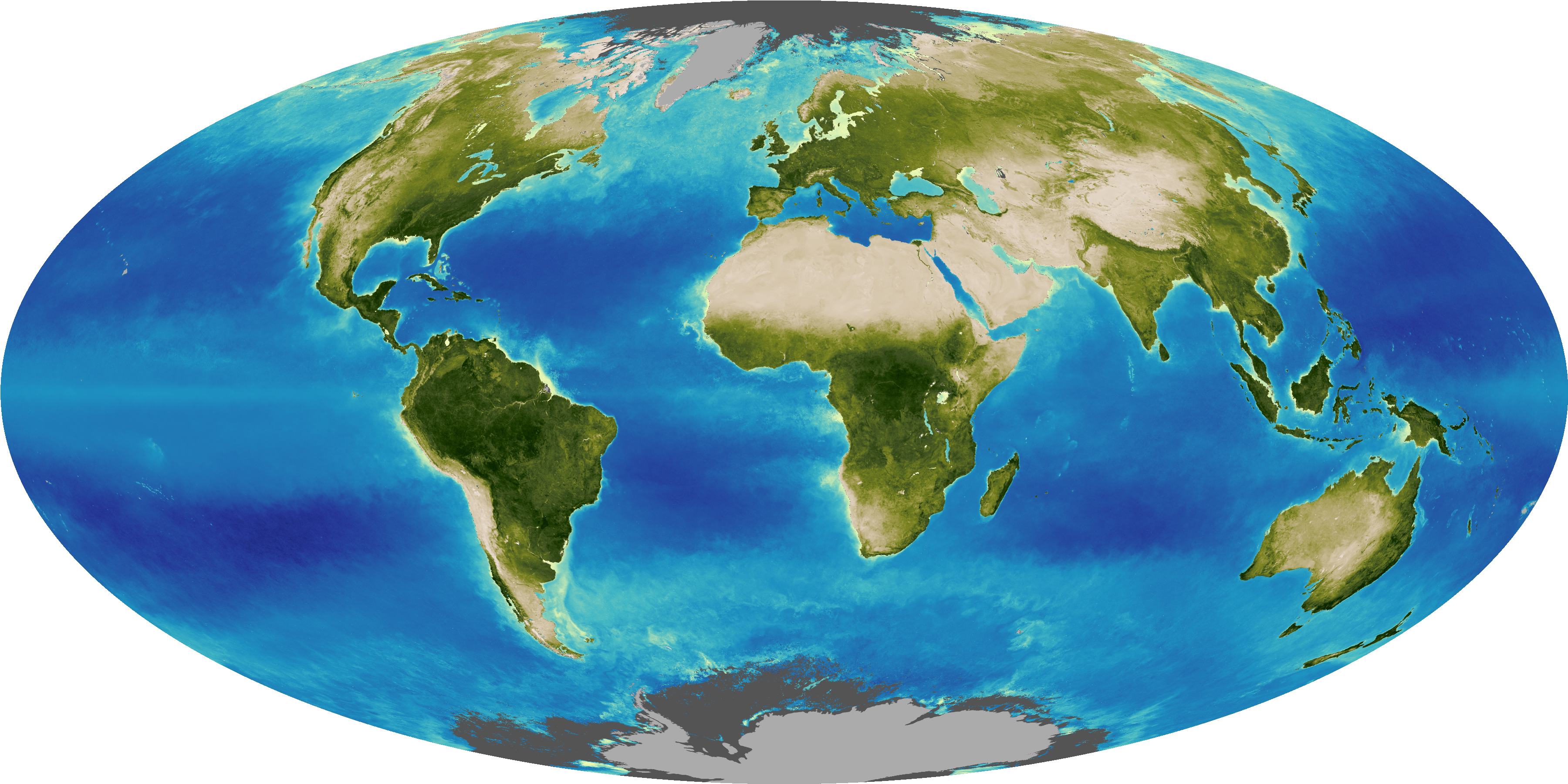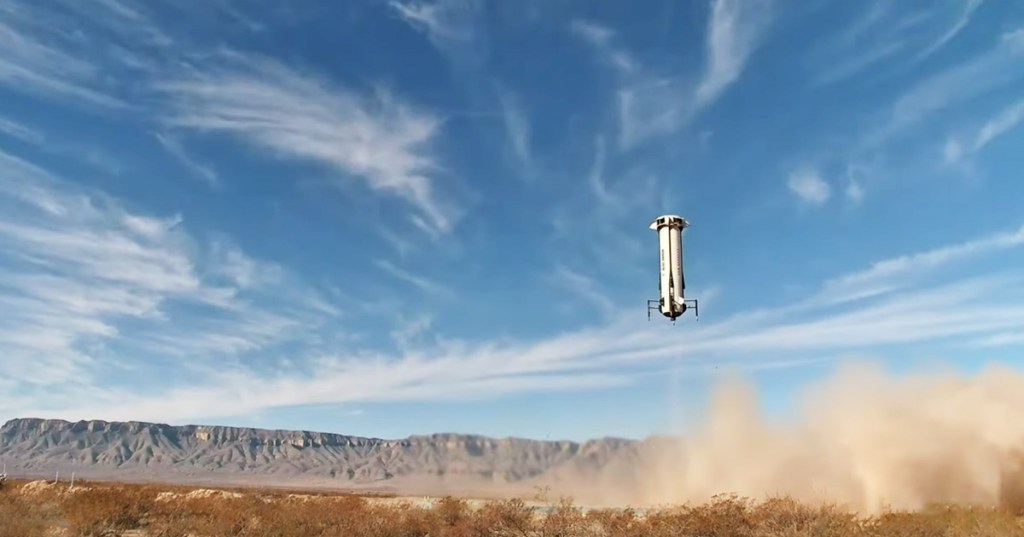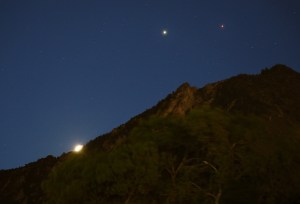The next full Moon will be Friday evening, Jan. 6, 2023, at 6:08 PM EST. The Moon will appear full from Thursday evening through Sunday morning.

The Next Full Moon is the Wolf or Ice Moon; the Moon after Yule or the Old Moon; a Long Night Moon; the Shakambhari, Paush, and Thiruvathira Festival Purnima; and Duruthu Poya and the Ananda Pagoda Festival Moon.
The next full Moon will be on Friday, January 6, 2023, appearing opposite the Sun in Earth-based longitude at 6:08 PM EST. This will be on Saturday from the West Center Africa and Central European Time Zones eastward to the International Date Line in the mid-Pacific. The bright star appearing to the lower left of the Moon will be Pollux. The Moon will appear full for about 3 days around this time, from Thursday evening through Sunday morning.
The Maine Farmers' Almanac began publishing "Indian" names for full Moons in the 1930s. Over time these names have become widely known and used. According to this almanac, as the full Moon in January this is the Wolf Moon, from the packs of wolves heard howling outside the villages amid the cold and deep snows of winter. Another name is the Ice Moon. Europeans called this the Moon after Yule, a 3-day winter solstice festival in pre-Christian Europe. Another English name for this Moon is the Old Moon.
Some might consider this a Long Night Moon. From moonrise on January 5 to moonset on January 6 the full Moon will be in the sky longer (15 hours 49 minutes) and will reach a higher maximum altitude (78.3 degrees at 11:38 PM) than it was for the Long Night Moon in December. Although the Moon will ride higher in the sky for longer than last month's Moon, the time it will be in the sky at night will be about a minute shorter.
In the Hindu calendar this full Moon is Shakambhari Purnima, the last day in the 8-day Shakambari Navratri holiday that celebrates the goddess Shakambhari. In the Purnimanta tradition that ends months on the full Moon day, this full Moon is Paush Purnima, the last day of the Hindu month of Paush. The day after Paush Purnima is the start of the month of Magha, a period of austerity. Bathing in the holy waters of India is an important activity for both Shakambari Navratri and Magha. This full Moon corresponds with the Thiruvathira festival celebrated by Hindus in the Indian states of Kerala and Tamil Nadu.
For the Buddhists of Sri Lanka, this is Duruthu Poya, which commemorates Siddhartha Gautama Buddha's first visit to Sri Lanka. In Myanmar this full Moon corresponds with the Ananda Pagoda Festival, a week-long celebration of this Buddhist temple built in 1105 AD in the city of Bagan.
In many lunar and lunisolar calendars the months change with the new Moon and full Moons fall in the middle of the lunar month. This full Moon is in the middle of the twelfth month of the Chinese calendar, Tevet in the Hebrew calendar, and Jumada al-Thani in the Islamic calendar, also known as Jumada al-Akhirah or Jumada al-Akhir.
As usual, the wearing of suitably celebratory celestial attire is encouraged in honor of the full Moon. Stay warm, but when the sky is clear, take advantage of these early nightfalls and late sunrises to get out, look up, and share the wonders of the sky!
As for other celestial events between now and the full Moon after next (with specific times and angles based on the location of NASA Headquarters in Washington, DC):
We may have a naked eye comet in late January and early February! Comet C/2022 E3 (ZTF) should be visible in the morning sky with binoculars and may become bright enough to see with the naked eye, especially from a dark area with clear skies. For more information see the Morning Sky Highlights and the Detailed Daily Guide around February 1 below.
As winter continues the daily periods of sunlight continue to lengthen. On Friday, January 6, 2023 (the day of the full Moon), morning twilight will begin at 6:24 AM EST, sunrise will be at 7:27 AM, solar noon will be at 12:13:40 PM when the Sun will reach its maximum altitude of 28.68 degrees, sunset will be at 5:01 PM, and evening twilight will end at 6:04 PM. By Sunday, February 5 (the day of the full Moon after next), morning twilight will begin at 6:11 AM, sunrise will be at 7:11 AM, solar noon will be at 12:22:02 PM when the Sun will reach its maximum altitude of 35.29 degrees, sunset will be at 5:34 PM, and evening twilight will end at 6:34 PM.
No major meteor showers are expected to peak during between this full Moon and the next, although the Quadrantid meteor shower will peak the evening of January 3, just before this full Moon. Moonlight will interfere, so the best time to look near the peak may be the morning hours of January 4 when the Moon will be lower in the sky and the radiant for this meteor shower will be higher.
Evening Sky Highlights
On the evening of Friday, January 6, 2023 (the day of the full Moon), as evening twilight ends (at 6:04 PM EST), the rising full Moon will be 14 degrees above the east-northeastern horizon with the bright star Pollux about 8 degrees to the lower right. Four of the five visible planets will be in the sky. Going from east to west, Mars (third brightest) will appear about 45 degrees above the eastern horizon, Jupiter (second brightest) will appear 49 degrees above the south-southeastern horizon, Saturn (fourth brightest) will appear 19 degrees above the southwestern horizon, and Venus (the brightest) will appear 3 degrees above the west-southwestern horizon. The bright object appearing closest to overhead will be Jupiter, the largest planet in our solar system.
As the lunar cycle progresses, Jupiter, Saturn, Mars, and the background of stars will appear to shift westward each evening (as the Earth moves around the Sun), while bright Venus will appear to move slowly in the other direction. The evening after the full Moon (January 7), the rising Moon will appear about 7 degrees on the other side the bright star Pollux. Saturn and Venus will appear to shift towards each other until they pass about a third of a degree apart on January 22, after which they will appear to separate again. The waxing Moon will appear near Venus and Saturn on January 22 and 23, Jupiter on January 25, the Pleiades star cluster on January 29, Mars on January 30, and Pollux on February 3. February 1 will be the last evening that the planet Saturn will be in the sky as evening twilight ends.
By the evening of Sunday, February 5, 2023 (the day of the full Moon after next), as evening twilight ends (at 6:33 PM), the rising full Moon will be 11 degrees above the east-northeastern horizon. Three of the five visible planets will be in the sky. Going from east to west, Mars (third brightest) will appear about 70 degrees above the southeastern horizon, Jupiter (second brightest) will appear 34 degrees above the west-southwestern horizon, and Venus (the brightest) will appear 12 degrees above the west-southwestern horizon. The bright object appearing closest to overhead will be Mars, with the bright star Capella a close second.
Morning Sky Highlights
On the morning of Friday, January 6, 2023 (the day of the full Moon), as morning twilight begins (at 6:24 AM EST), the setting full Moon will appear 10 degrees above the west-northwestern horizon. The bright star appearing closest to overhead will be Arcturus at 67 degrees above the southeastern horizon. Arcturus is the 4th brightest star in our night sky and is 36.7 light years from us. While it has about the same mass as our Sun, it is about 2.6 billion years older and has used up its core hydrogen, becoming a red giant about 25 times the size and 170 times the brightness of our Sun. Also nearly overhead towards the North will be the constellation Ursa Major, also known as the Big Dipper.
As this lunar cycle progresses, the waning Moon will appear near the bright star Pollux on January 7, Regulus on January 10, Spica on January 15, and Antares on January 18. Beginning January 14, the planet Mercury will rise before morning twilight begins, appearing low on the east-southeastern horizon. Mercury will reach its highest above the horizon on January 24, after which it will shift towards the horizon again. In late January and early February the comet C/2022 E3 (ZTF) should be visible with binoculars and may become bright enough to see with the naked eye, especially from a dark area with clear skies. This comet will be high in the morning sky for Northern Hemisphere viewers. Its closest approach to the Earth will be midday on February 1, so it is likely to appear its brightest just before, with the best time to look the less than 2 hours between moonset (4:35 AM EST) and the start of morning twilight (6:14 AM). The nearly full waxing Moon will appear near the bright star Pollux on the mornings of February 3 and 4.
By the morning of Sunday, February 5, 2023, as morning twilight begins (at 6:11 AM EST), the setting full Moon will appear 13 degrees above the west-northwestern horizon. The planet Mercury will appear 3 degrees above the east-southeastern horizon. The comet C/2022 E3 (ZTF), fading as it rapidly moves away from the Sun and the Earth, will appear 76 degrees above the south-southwestern horizon. The bright star appearing closest to overhead will still be Arcturus at 68 degrees above the south-southwestern horizon.
Detailed Daily Guide
Here for your reference is a day-by-day listing of celestial events between now and the full Moon after next. The times and angles are based on the location of NASA Headquarters in Washington, DC, so some of these details may differ for your location. I use parentheses to indicate specific times that might be different for you.
On Thursday evening, December 29, 2022, as evening twilight ends (at 5:58 PM EST), the bright planet Jupiter will appear 7 degrees to the right of the half-full Moon. The Moon will reach its first quarter at 8:21 PM. Jupiter and the Moon will appear to separate as the evening progresses.
Saturday evening, December 31, 2022, will be the last evening that the planet Mercury will be above the horizon as evening twilight ends, although Mercury may remain visible in the glow of twilight for a few more evenings after this.
Monday evening into Tuesday morning, January 2 to 3, 2023, the Pleiades star cluster will appear about 4 degrees from the waxing gibbous Moon. The Pleiades will be to the left as evening twilight ends (at 6:01 PM EST). By the time the Moon reaches its highest in the sky for the night (at 9:07 PM) the Pleiades will appear above the Moon. As the Pleiades begin to set below the west-northwestern horizon (around 4:30 AM) they will appear to the right of the Moon, with the bright planet Mars about 7 degrees above the Moon.
Tuesday evening into Wednesday morning, January 3 to 4, 2023, the bright planet Mars will appear near the waxing gibbous Moon. As evening twilight ends (at 6:01 PM EST) Mars will be about 3 degrees to the upper right of the Moon, with the bright star Aldebaran about 8 degrees to the lower right of the Moon. By the time the Moon reaches its highest in the sky for the night (at 9:56 PM) Mars will appear about 4 degrees to the right of the Moon. When Mars sets below the west-northwestern horizon (at 5:09 AM) Mars will be to the lower right of the Moon.
The Quadrantid meteor shower is expected to peak Tuesday night, January 3, 2023, at 10:40 PM EST (03:40 UTC on January 4). Unlike the Geminids in mid-December, this meteor shower has a narrow peak, and these meteors tend to be fainter as well, so moonlight will interfere. To avoid moonlight, the best time to look may be the morning hours of Wednesday, January 4, when the Moon will be lower in the sky and the radiant for this meteor shower will be higher.
On Wednesday, January 4, 2023, the Earth will be at perihelion, the closest we get to the Sun in our orbit. Between perihelion and 6 months later at aphelion there is about a 6.7% difference in the intensity of the sunlight reaching the Earth, one of the reasons the seasons in the southern hemisphere are more extreme than in the northern hemisphere. Perihelion is also when the Earth is moving the fastest in its orbit around the Sun, so if you run east at local midnight, you will be moving about as fast as you can for your location (at least in Sun-centered coordinates). To view Dr. C. B. Boff's proclamation on this topic visit http://cbboff.org/Proclamations/ (dated now, as it was prepared for the new millennium).
Wednesday evening, January 4, 2023, will be the last evening that the planet Mercury will be above the horizon 30 minutes after sunset, an approximation of the latest it might be visible in the glow of dusk low on the west-southwestern horizon.
Ignoring Daylight Savings Time (at least for the Washington, DC area and similar latitudes) Thursday, January 5, 2023, will have the latest sunrise of the year (with sunrise at 7:26:56 AM EST).
The next full Moon will be Friday evening, January 6, 2023, at 6:08 PM EST. The Moon will appear full for about 3 days around this time, from Thursday evening through Sunday morning.
Friday night into Saturday morning, January 6 to 7, 2023, the bright star appearing near the full Moon will be Pollux, the brighter of the twin stars in the constellation Gemini. Pollux will be about 8 degrees to the lower left of the Moon as evening twilight ends (at 6:04 PM EST). By the time the Moon reaches its highest in the sky for the night (at 12:29 AM) Pollux will appear about 5 degrees to the upper left of the Moon. Pollux will be about 4 degrees above the Moon as morning twilight begins (at 6:24 AM).
Saturday morning, January 7, 2023, the planet Mercury will be passing between the Earth and the Sun as seen from the Earth, called inferior conjunction. Mercury will be shifting from the evening sky to the morning sky and will begin emerging from the glow of the dawn on the eastern horizon a few days later (depending upon viewing conditions).
Saturday evening, January 7, 2023, as evening twilight ends (at 6:05 PM EST), the bright star Pollux will appear about 7 degrees above the full Moon, and the pair will separate as the evening progresses.
Sunday morning, January 8, 2023, at 4:20 AM EST, the Moon will be at apogee, its farthest from the Earth for this orbit.
Monday morning, January 9, 2023, will be the first morning that the planet Mercury will be above the horizon as 30 minutes before sunrise, an approximation of the earliest it might start being visible in the glow of dawn low on the east-southeastern horizon.
Monday night into Tuesday morning, January 9 to 10, 2023, the bright star Regulus will appear near the waning gibbous Moon. Regulus will be more than 8 degrees to the lower right of the Moon on the east-northeastern horizon as Regulus rises (at 8:18 PM EST). By the time the Moon reaches its highest in the sky for the night (at 2:51 AM) Regulus will be about 6 degrees to the lower left of the Moon. As morning twilight begins (at 6:24 AM) Regulus will be about 5 degrees to the lower left of the Moon.
Tuesday evening, January 10, 2023, as the Moon rises above the east-northeastern horizon (at 8:36 PM EST), Regulus will be about 8 degrees to the upper right of the Moon, and the pair will separate as night progresses.
Saturday morning, January 14, 2023, will be the first morning that the planet Mercury will be above the east-southeastern horizon as morning twilight begins (at 6:23 AM EST).
Saturday evening, January 14, 2023, the waning Moon will appear half-full as it reaches its last quarter at 9:10 PM EST.
Sunday morning, January 15, 2023, the bright star Spica will appear near the half-Moon. Spica will be about 5 degrees to the upper right of the Moon as it rises above the east-southeastern horizon (at 12:41 AM EST). Spica will be about 6 degrees to the right of the Moon as the Moon reaches its highest in the sky for the night (at 6:21 AM) and morning twilight begins.
Wednesday morning, January 18, 2023, the bright star Antares will appear close to the waning crescent Moon. Antares will rise above the southeastern horizon (at 4:20 AM EST) about 3 degrees to the lower right of the Moon. Morning twilight will begin about 2 hours later (at 6:22 AM).
Saturday afternoon, January 21, 2023, at 3:53 PM EST, will be the new Moon, when the Moon passes between the Earth and the Sun and will not be visible from the Earth. Since this is only 5 minutes before the Moon will be at its closest to the Earth for this orbit (called perigee), this is a supermoon. The term "supermoon" was coined by the astrologer Richard Nolle in 1979 for either a full or new Moon near perigee. We cannot see new supermoons (except when they cause an eclipse). Most of the public interest has been in full supermoons, as these are the ones we can see.
The day of or the day after the New Moon marks the start of the new month for many lunisolar calendars. The first month of the Chinese calendar starts on Sunday, January 22, 2023, making this Chinese New Year, the start of the year of the Rabbit! Chinese New Year and related celebrations throughout much of Asia and in areas with significant Chinese populations celebrates the end of winter and start of spring. Traditional festivities start on the eve of Chinese New Year (Saturday, January 21) and continue until the Lantern Festival on the 15th day of the first lunar month (Sunday, February 5).
Sundown on Sunday January 22, 2023, marks the start of Shevat in the Hebrew calendar. In the Islamic calendar the months traditionally start with the first sighting of the waxing crescent Moon. Many Muslim communities now follow the Umm al-Qura Calendar of Saudi Arabia, which uses astronomical calculations to start months in a more predictable way. Using this calendar, sundown on Sunday evening, January 22, will probably mark the beginning of Rajab. Rajab is one of the four sacred months in which warfare and fighting are forbidden.
Sunday evening, January 22, 2023, low on the west-southwestern horizon, the bright planet Venus and the fainter planet Saturn will appear at their closest, about a third of a degree apart, well within the field of view of binoculars or a backyard telescope. Harder to see will be the thin, waxing crescent Moon, which will be 8 degrees below Venus and Saturn. To see the Moon you will need to look during twilight, as the Moon will set (at 6:21 PM EST) just a few minutes after evening twilight ends. Venus and Saturn will set about 45 minutes later (at 7:05 PM).
Monday evening, January 23, 2023, the waxing crescent Moon, the bright planet Venus, and the fainter planet Saturn will form a rough line above the west-southwestern horizon. As evening twilight ends (at 6:20 PM EST) the Moon will be 13 degrees above the horizon, Venus will be to the lower right at 8 degrees, and Saturn farther to the lower right at 7 degrees above the horizon. Saturn will set first about 22 minutes later (at 7:02 PM) followed by Venus (at 7:07 PM) and finally the Moon (at 7:40 PM).
Tuesday morning, January 24, 2023, will be when the planet Mercury will appear its highest above the east-southeastern horizon as morning twilight begins for this apparition, 5 degrees. Mercury will rise (at 5:47 AM EST) about half an hour before morning twilight begins (at 6:20 AM). To see Mercury you will need a clear view to the east-southeastern horizon.
Wednesday evening, January 25, 2023, the bright planet Jupiter will appear about 6 degrees above the waxing crescent Moon. The Moon will be 38 degrees above the southwestern horizon as evening twilight ends (at 6:22 PM EST) and the Moon will set first less than 4 hours later (at 10:07 PM).
On Saturday morning, January 28, 2023, the Moon will appear half-full as it reaches its first quarter at 10:19 AM EST.
Sunday evening into early Monday morning, January 29 to 30, 2023, the Pleiades star cluster will appear near the waxing gibbous Moon. The Pleiades will appear about 6 degrees to the upper left of the Moon as evening twilight ends (at 6:26 PM EST). The Moon will reach its highest in the sky for the night 38 minutes later (at 7:04 PM) and the Moon will set first about 7.5 hours after that (at 2:33 AM) with the Pleiades appearing about 4 degrees to the upper right.
Early Monday morning, January 30, 2023, will be when the planet Mercury will reach its greatest angular separation from the Sun as seen from the Earth for this apparition (called greatest elongation), appearing half-lit through a large enough telescope. Because the angle of the line between the Sun and Mercury and the horizon changes with the seasons, the date when Mercury and the Sun appear farthest apart as seen from the Earth is not always the same as when Mercury appears highest above the horizon as morning twilight begins, which occurred on January 24.
Monday evening into early Tuesday morning, January 30 to 31, 2023, the bright planet Mars will appear near the waxing gibbous Moon. Mars will be about 3 degrees to the lower left of the Moon as evening twilight ends (at 6:27 PM EST), the Moon will reach its highest in the sky for the night about 1.5 hours later (at 7:53 PM) with Mars about 2 degrees to the upper left. Mars will swing around the Moon, passing quite close to the Moon early Tuesday morning (around 12:50 AM for the DC area). By the time Mars sets below the west-northwestern horizon (at 3:30 AM) it will be about 3 degrees to the lower right of the Moon.
In late January and early February 2023, the comet C/2022 E3 (ZTF) should be visible in the morning sky with binoculars and might become bright enough to see with the naked eye, especially from a dark area with clear skies. From northern latitudes the comet will be high in the sky and will shift noticeably each night. Keep an eye out for finder charts and updates on the comets brightness in the press, and look for an app or a website to get predictions and guidance on when and where to look from your area. How bright a comet appears depends both on things we can predict, how close it is to the Earth and how close it is to the Sun, and on what we cannot predict, how much gas and dust it is giving off. If the gas and dust are not rapidly changing, the time to see this comet at its brightest will likely be just before closest approach to the Earth, the early morning of Wednesday, February 1, during the less than 2 hours between moonset (at 4:35 AM EST) and when morning twilight begins (at 6:14 AM). As Comet C/2022 E3 (ZTF) races away from the Sun, it will reach its closest to the Earth later on February 1 at 12:55 PM (when we can't see it), passing 0.28 AU (42,500,000 km or 26,400,000 miles) from us. This comet was discovered using the Zwicky Transient Facility (ZTF) located on Mt. Palomar in Southern California.
Wednesday evening, February 1, 2023, will be the last evening that the planet Saturn will be above the horizon as evening twilight ends (at 6:29 PM EST).
Wednesday, February 1, 2023, will be Imolc, and Thursday, February 2, will be Candlemas and Groundhog's Day. The tradition in some European countries was to leave Christmas decorations up until February 1 (it was considered bad luck to leave decorations up past Candlemas). For example, Robert Herrick (1591-1674) starts his poem "Ceremonies for Candlemas Eve" with "Down with the rosemary and bays, down with the mistletoe; Instead of holly, now up-raise the greener box (for show)." Here's a link to the full poem: http://www.luminarium.org/sevenlit/herrick/candlemas1.htm
Our calendar divides the year into four seasons based upon the solstices and equinoxes, with spring starting on the vernal equinox in March. This approximates winter as the quarter of the year with the coldest temperatures. Much of pre-Christian northern Europe celebrated "cross-quarter days" halfway between the solstices and equinoxes, dividing the seasons on these days. Using this definition, winter was the quarter of the year with the shortest daily periods of daylight, and spring started on Imbolc, now celebrated on February 1.
We have a tradition in the USA that if the groundhog sees its shadow, winter will end on Groundhog Day. If not, winter will last six weeks more (ending around the time of the spring equinox). Groundhog Day appears to tie back to European lore about whether or not badgers, wolves, or bears (instead of groundhogs) see their shadows. Many believe that our Groundhog Day and Candlemas traditions tie back to earlier celebrations for the start of spring in the old calendar. It seems plausible to me that it was confusing to have two competing dates for the end of winter. Perhaps it was best to let a natural event (such as an animal's shadow) decide which definition to use, rather than arguing with your neighbors for the next six weeks...
Friday morning, February 3, 2023, the bright star Pollux will appear above the waxing gibbous Moon, appearing to shift closer as morning progresses. The Moon and Pollux will be at their closest in the afternoon when we can't see them.
Friday evening into Saturday morning, February 3 to 4, the bright star Pollux will appear near the waxing gibbous Moon. Pollux will appear to shift clockwise around the Moon and move away to the lower right as the night progresses. As evening twilight ends (at 6:31 PM EST) Pollux will appear about 4 degrees above the Moon. The Moon will reach its highest in the sky for the night (at 11:15 PM) with Pollux about 5 degrees to the upper right. As morning twilight begins (at 6:12 AM) Pollux will be about 9 degrees to the lower right of the Moon.
Saturday, February 4, 2023, at 3:55 AM EST, the Moon will be at apogee, its farthest from the Earth for this orbit.
The full Moon after next will be on Sunday afternoon, February 5, 2023, at 1:29 PM EST. The Moon will appear full for about 3 days around this time, from early Saturday morning through early Tuesday morning.
































